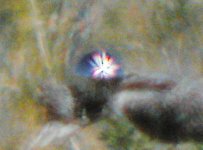Oddly enough I've come across another Zeiss 85 message regarding a failed star test. In a followup e-mail he further commented that he checked two Zeiss scopes and they were both the same, so he bought a Leica instead.
--- In
[email protected], "paschr9" <
[email protected]...> wrote:
>
> Greetings -
>
> I am new to this list but have been active in amateur astronomy for
> quite some time. I have had an interest in acquiring a spotting
> scope for some time as a possible replacement for my Tele Vue 85 -- I
> thought it would be nice to have a lighter "quick look" scope for
> daytime and nighttime use, as long as the trade off in optical
> quality wasn't too severe.
>
> Based on comments here and elsewhere I ordered a new Zeiss Diascope
> 85 + zoom, which arrived today. It appeared to have some problems
> somewhere along the line as the lens cap was off and loose in the box
> and the lens cap itself was no longer functional (one of the gripping
> mechanisms was broken off).
>
> Well, I tried it tonight on Saturn and Jupiter and I think I must
> have one that is defective. The images were quite poor, with no real
> sharp focus at the maximum zoom magnification (or any other
> magnification). Worse still both Jupiter and Saturn were lost in a
> hazy glow; my TV-85 set up right next to the Zeiss was as sharp as a
> tack.
>
> I did a star test (as amateur astronomers like to do) and it struck
> me as quite unusual -- in focus was pretty sharp, but outside of
> focus the image was so mushy that no rings were detectable.
>
> I would have expected that Saturn would be quite sharp, so I'm
> assuming I just got a lemon. FWIW I've owned several Tele Vues and
> all have been superb optically. I bought mine from a very good
> dealer and I'm sure they'll work this out, but it is a bit
> frustrating. I think I will try a replacement, but I might just bail
> out and stick with the known (albeit heavier) quantity.
>
> Any comments on what I should expect in terms of Saturn images would
> be helpful, as would be any perspective on how a "good" Zeiss looks
> in a star test.
>
> Best regards,
>
> Paul Schroeder




